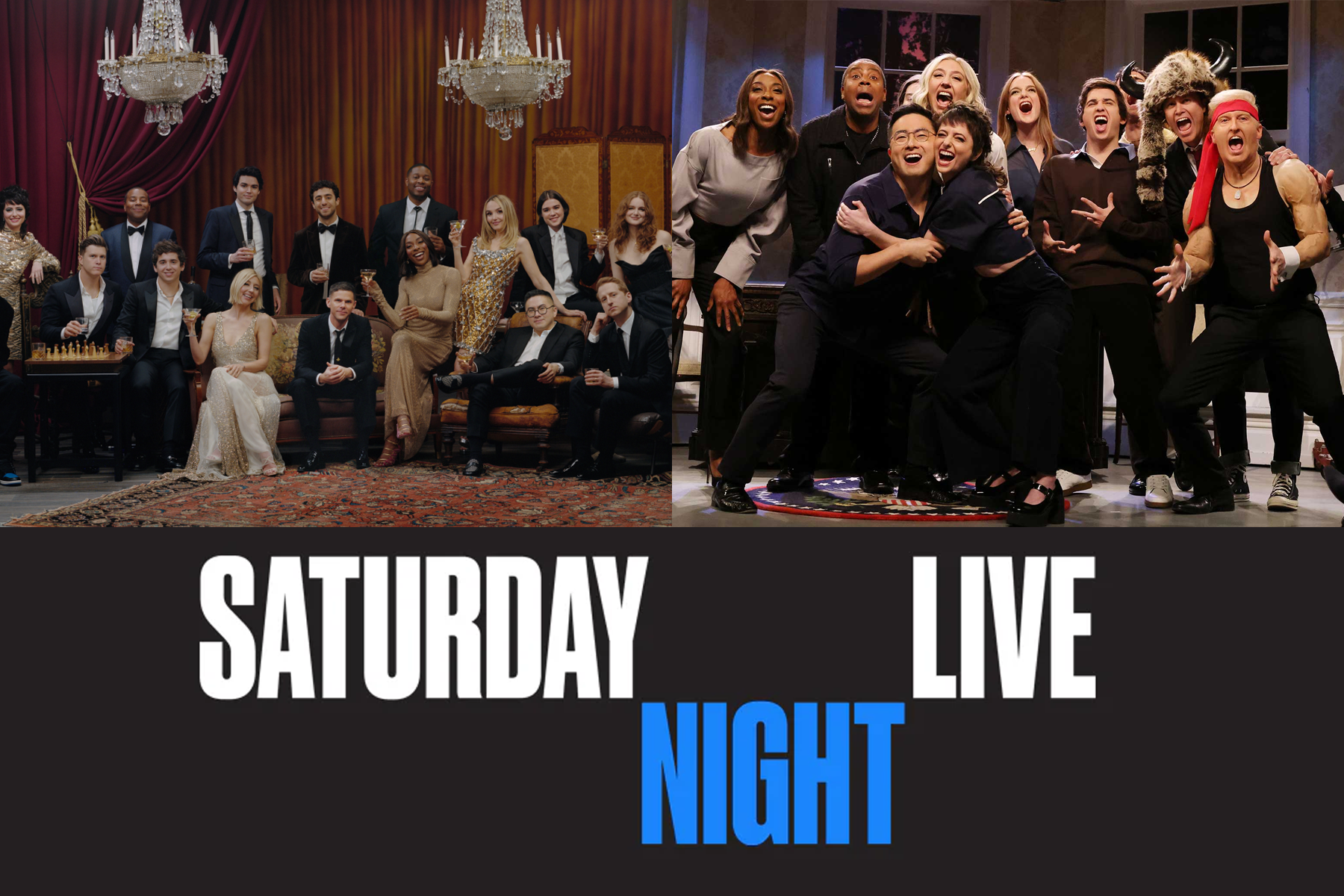While algorithms feed us endless clips of the best and worst parts of society, Saturday Night Live offers a nuanced and curated perspective that is often lost in the fast-paced digital world.
Premiering on Oct. 11, 1975, Saturday Night Live (SNL) is a late-night sketch comedy variety show created by Lorne Michaels for NBC. At the time, the network needed something to fill the empty Saturday slot left by the Tonight Show. Michaels’ idea was simple but daring: create a live show that blended sketch comedy, political satire and musical performances all broadcasted live from Studio 8H in New York City’s Rockefeller Centre.
SNL’s original purpose was to capture the countercultural energy of the 1970s and give a platform for young rebellious comedians who reflected the new generation’s voice. What emerged was a show that merged humor, pop culture, parody and social commentary, spotlighting both celebrity guest hosts and comedy’s freshest faces.
One of the best examples of this balance is “Weekend Update,” SNL’s weekly reoccurring segment that recaps the week’s headlines with sharp banter, tongue-in-cheek jokes and clever wordplay. The segment’s rotating guest characters allows the cast to show off their individuality and comedic range however they please. Meanwhile, celebrity guest hosts keep the show fresh, letting viewers see a different side of famous faces as they play, perform and sometimes completely lose themselves in absurdity.
From the beginning, SNL’s mission statement has stayed the same: push boundaries, communicate the week’s headlines and prove that comedy can still speak truth to power — all while making people laugh.
There’s a saying online that “SNL is funniest when you’re in college.” It makes sense: SNL exposes you to political and cultural satire in ways you may not encounter otherwise. Pushing boundaries, testing limits and laughing at the absurdity all align with the experimentation of college life. Those jokes hit harder when you’re young, impressionable and still figuring out what makes you laugh.
SNL sketches feel tailor-made to younger audiences, but their humor stretches far beyond that. The show’s wide appeal means anyone can find something funny in it, yet for students and young viewers, there’s a sense that your generation is shaping what comedy looks like. It’s a back door into the show’s sense of familiarity and community. Even as the cast changes over the years, the laughter still feels like it belongs to everyone.
Over its 50 seasons, Saturday Night Live has become a cultural backbone, staying relevant through sharp sketches and fearless critiques of politics, pop culture and the news of the day. While modernization means that clips are instantly available across social media, there’s still a case for watching it live.
Experiencing the show from start to finish offers a glimpse into the magic that makes SNL so special. Sketches flow one after another with rhythm and chaos; transitions happen seamlessly to the viewer. Behind the scenes, the logistics should be impossible; cast members sprinting through costume and make up changes, rewiring sets, resetting lines, all done in real time.
The audience never sees this madness. What they see is polish, professionalism and pace. This pressure only cracks when a cast member breaks and laughter fills the stage. It’s a peek behind the curtain, a reminder that what’s happening is completely real, raw, unedited and unperfected. That moment of release ripples throughout the studio and into the living room. It’s the heartbeat of live television: messy, human and electric.
That’s also where the bond between viewer and cast forms. You start to recognize the heavy hitters — the ones who elevate any sketch they’re in — and those still finding their footing. SNL isn’t just a steppingstone for comedians, it’s a launchpad. Many of the greatest names in comedy earned their stripes in Studio 8H, learning to perform under impossible deadlines, stay composed when everything goes wrong and deliver under the pressure of thousands watching live.
It’s no wonder that SNL is known for turning out diamonds. Watching it today could mean spotting tomorrow’s stars at the very start of their careers.
While SNL is still primarily broadcast on cable television, it’s understandable that most university students might not have access to it that way. Fortunately, the show has modernized with the times, becoming more accessible than ever. Full episodes are available to stream the next day online, and musical performances are often shared directly by the artists on their own social media pages. You can even catch the show through livestreams on TikTok, Instagram, or on the Global TV app — all of which are easy to access on most streaming devices.
However you watch SNL, the important thing is that you keep tuning in. The show only gets better the more you connect with its chaos. Saturday Night Live isn’t just late-night television — it’s a living tradition. With every cast change, every sketch and every new generation of viewers, it continues to evolve. Watching SNL isn’t just about the jokes, it’s about witnessing how the stories of the day are reimagined with comedy and delivered back to us.
After nearly half a century the show is still doing what it was built to do: challenge, entertain and unite. In an age of endless scrolling, nothing compares to the thrill of watching it live. It may be something your parents grew up with, but it belongs to you too.

